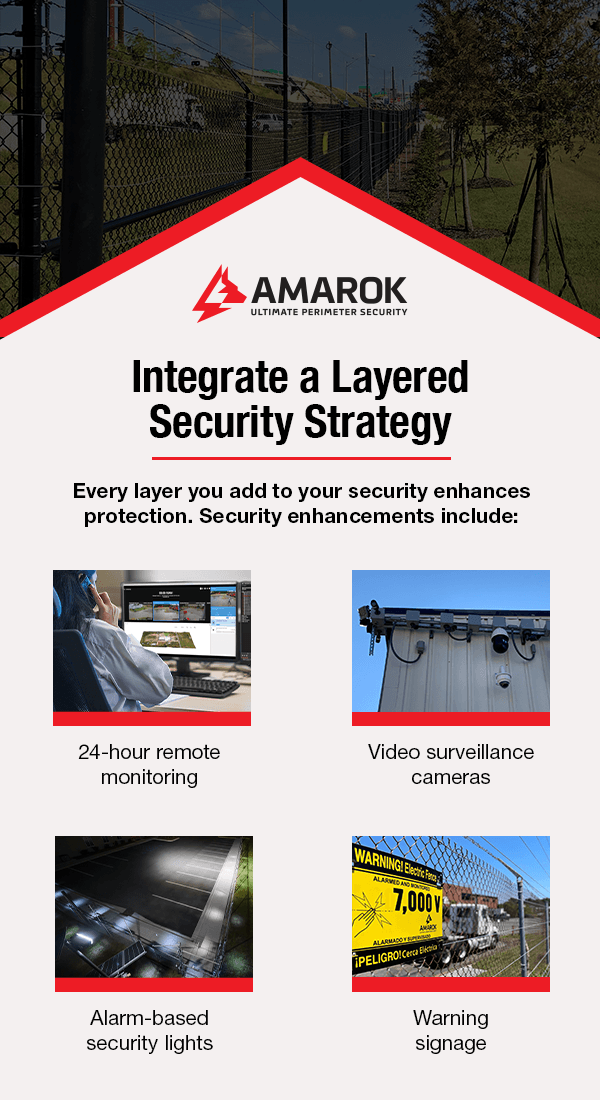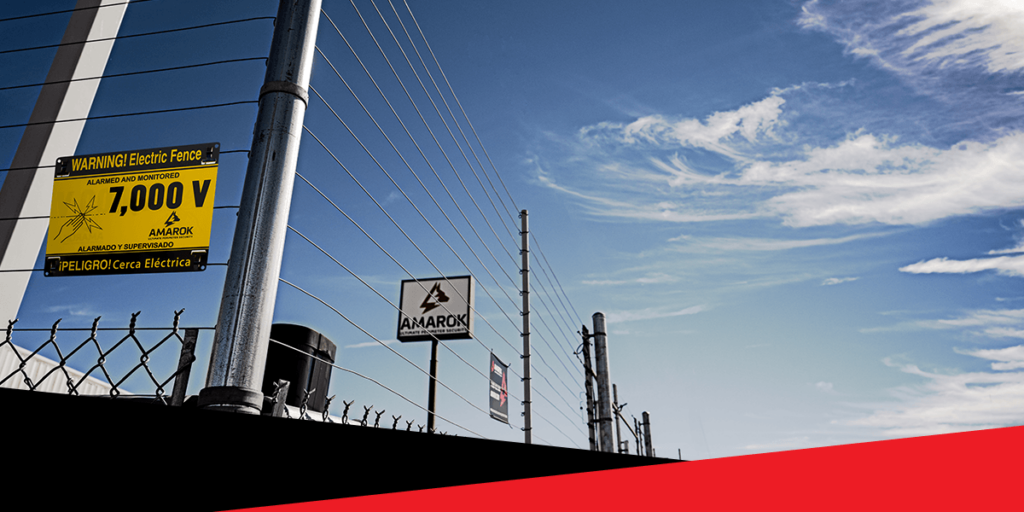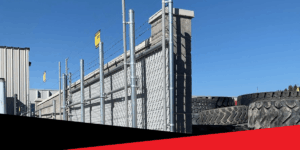Heavy equipment theft is a significant concern for many businesses. It puts your bottom line at risk. Construction and landscaping materials are in high demand, and businesses cannot complete their jobs without them. Thieves target rental lots, construction sites, and storage facilities to find security gaps.
If you own heavy equipment, you’re at risk. Understanding what theft means for your business and what you can do about it is essential in today’s security landscape.
The Importance of Equipment Theft Protection
Valuable machinery is often a target for criminals. They exploit gaps in your security to access heavy equipment with high resale value. These thefts can have a significant impact on your business. Site security is a major concern for business owners for several reasons.
Staggering Business Costs
Heavy equipment theft burdens construction companies and rental yards with financial losses and increased insurance premiums, sometimes leading to costly project delays. Construction equipment is often unmonitored at night, creating an attractive target for criminals. The frequent movement of construction equipment also makes it challenging to track and recover stolen machinery.
In addition to financial losses, stolen construction equipment can drive up your insurance premiums, further straining your budget. One insurance claim can raise your deductible by as much as 20%. Repeat incidents might cause your insurance company to drop your coverage altogether.
These losses are only part of the issue. When your equipment is stolen, it can result in project delays and downtime. Projects can extend for days or weeks, which is costly for your business and reputation. With around 11,000 construction machinery thefts annually, it’s a risk many businesses can’t afford to take, especially with low recovery rates.
While many assume that equipment theft involves one or two items, the reality is that it can be significant. For example, police seized $1 million in stolen construction equipment from a man in Oxon Hill, Maryland in 2024. Statistics show that when you factor in delays, replacements, and downtime, it amounts to $1 billion in annual losses.
A Growing Issue
Construction equipment theft is on the rise, with petty thieves targeting rental sites and organized rings scouting specific machines for quick thefts. These organized theft rings have a list of machines they want to steal, then they scout the area and are in and out in a matter of minutes. Organized retail crime has skyrocketed, stretching law enforcement resources thin. Criminals are finding it easier to steal from construction sites and dealerships.
Another reason for the growth in equipment theft is the lack of traceability. Unlike cars, heavy equipment lacks mandated registration and a centralized theft database, making recovery challenging. The penalties for criminals who do get caught are generally soft. For example, in California, the sentence is up to a year, and in North Carolina, it’s up to three years.
Heavy equipment is almost as expensive to buy as it is to lose to theft.
Today’s machines are versatile, with many attachments available, and organized theft rings are willing to accept less than book value. In turn, smaller companies are often under financial constraints and looking for a deal. Considering these factors, it’s easy to see why criminals can sell stolen equipment. Stolen heavy equipment is used for more than resale. It can become other property crimes. For example, thieves use stolen excavators for smash-and-grab raids on ATMs.
9 Equipment Theft Prevention Tips
Despite the above statistics, you can still take proactive steps to prevent heavy equipment theft on your premises.
1. Assess Your Risks
Every lot and jobsite is unique, and knowledge is power concerning theft prevention. Review your premises and identify potential targets that equipment thieves would find easy to maneuver. Look for weaknesses in your current security, like a lack of video surveillance or areas where intruders could hide. It’s also essential to be aware of seasonality and other time-related changes. Equipment thieves are most active in the summer, as there’s more equipment in use. They also like to strike under the cover of darkness.
A professional threat assessment is the most effective way to identify potential vulnerabilities on your property. The process involves inviting experts to evaluate your site in conjunction with local crime data. They quantify your risk and determine a proactive approach to preventing and deterring theft.

2. Keep Detailed Records
When equipment moves from site to site, it can be challenging to keep track. Create a detailed inventory of your equipment, including serial numbers and photographs. You can also implement access control for equipment keys, rendering the machines useless without an approved operator. Conduct regular inventory checks so you can address any discrepancies.
Rental operations benefit from a straightforward pick-up and drop-off policy. Customers must show a copy of their ID and provide contactable references. If your equipment is stolen, you can give machinery information to law enforcement, which may aid in its recovery. Register your equipment with Verisk’s National Equipment Register for additional recourse. You can also mark it with permanent demarcation to make it less appealing for thieves and more identifiable for police.
3. Consider Tracking Solutions and Anti-Theft Devices
Another excellent strategy is to make your equipment more challenging to steal. Thieves look for frictionless experiences, and anything you can do to add friction goes a long way. Take the following steps to protect your equipment when not in use:
- Add anti-theft devices: Pick-resistant locks and security chains are often effective deterrents. Alarm systems are also useful, especially when placed on vehicles’ doors or around the property’s perimeter.
- Integrate tracking devices: GPS trackers can track your equipment’s location if someone steals it. You can use this information to recover stolen items or assist the police in identifying the offenders. You can also use tracking devices to set up geofences, which monitor equipment in real time and alert you if it leaves a specified area.
- Immobilize your equipment: You can immobilize a machine in several ways, including removing the batteries or chaining it to a heavy, fixed object. You can also use an engine immobilizer to disable the ignition from an online dashboard.
4. Store Equipment Properly
The more accessible your equipment seems, the more likely thieves will try and steal it. Move light, maneuverable, and highly targeted equipment out of sight. Keep it in service bays or secure areas on the job site. In addition, consider how you stage the machines and trucks on your site. They may inadvertently create cover for intruders, allowing them access to easy-to-move options.
Store your equipment in well-lit areas and surround easy-to-steal items with larger machinery. If you leave equipment on trailers, criminals can use them to steal your equipment. Remove machines from the trailers and secure the trailers themselves.
5. Educate Your Team
Preventing theft is a team effort. Your team and community must work together to stop criminals in their tracks. Communicate with businesses in your area and raise awareness of thefts in progress. You should also trade emergency contact information so you can help each other if thieves strike.
Your employees play a significant role in preventing equipment theft. Train them on the signs to look for, including:
- Unknown trucks parked at job sites
- Vehicles parked in vacant lots adjoining your business and occupants loitering in the area
- Gates left open at facilities that are closed
- After-hours activity on a site
- Overloaded trucks or unsecured equipment transported in the area
Create a security culture within your organization. Train your employees to conduct strict check-in and check-out procedures and inspect equipment before and after use. They should also have protocols for storing and locking up equipment at the end of a shift. Train them in reporting procedures if equipment is stolen so they can act fast.
The safer your working environment, the more productive your employees will likely be. Encourage your team to look out for each other’s safety, not just the equipment. Over time, safety protocols will become ingrained in their tasks.
6. Invest in Access Control
Access control systems restrict and manage who enters your site and when. They allow you to monitor the flow of people and ensure entry to authorized personnel only. The trick is implementing controls that give frictionless entry to the right people while deterring criminals. In many cases, job sites benefit from a single entry and exit point. It narrows down opportunities for criminals to access the property undetected.

Depending on your site’s unique layout, your access control system can include several components:
- Identification: Identification tools like badges, IDs, credential readers, pin codes, and key fobs can maintain accountability among your team. They streamline the entry process and maintain accurate records of entry and exit. They can also help you implement different access levels and enhance overall security.
- Electronic access systems: Key cards, biometric scanners, and other electronic access systems provide frictionless access to authorized personnel, improving security and efficiency on your site. You can update your systems in real time to reflect changes in roles and maintain detailed records of exit and entry times.
- Physical barriers: Gates, bollards, and turnstiles are excellent lines of defense. They control pedestrian and vehicle entry. Well-maintained barriers can also prevent accidental access to hazardous areas, protecting any visitors on the property.
7. Hire Night Guards
After-hours security can be invaluable. The physical presence of night guards is an excellent deterrent. Hiring professionals often means they’re licensed to carry weapons and trained to spot and stop suspicious activity. Having them on-site when something happens means they can respond immediately, minimizing the damage that potential thieves can inflict.
Despite these benefits, security personnel are only a partial solution. Security guards are prone to human error, so they work best as part of a layered security plan.
8. Secure Your Perimeter
Robust perimeter security is a fundamental measure for any business. Along with access control, it’s a proactive solution to stop unauthorized entry. While a perimeter fence makes it challenging for criminals to enter your property, an electric fence is an investment that ups the ante. It’s an effective deterrent. Thieves would rather move along than risk a safe but memorable shock. A solar-powered electric fence makes the process cost-effective and protects your property even during power outages.
Electric fencing works by sending high-voltage pulses through the wire. When an intruder touches it, they complete an electric circuit and receive a safe but memorable shock, deterring them from attempting entry. It can act as a stand-alone deterrent or form part of a complete security solution for complete deterrence and detection. With the right provider, electric fencing is low-maintenance and cost-effective. When installed by professionals, you can enjoy the benefits with minimal intervention.
For extra security, integrate perimeter alarm-based lighting systems. When your electric fence alarm is activated, the system immediately detects activity along your perimeter. The alarm sets off a rapid response, flooding the area with light. It’s an effective deterrent for criminals looking to hide in the darkness, and the system alerts security personnel to potential threats.
9. Integrate a Layered Security Strategy

A layered security strategy is based on the fact that a single protection approach is ineffective. As the name suggests, this approach involves integrating different security layers. Each layer delays or deters a criminal’s plan of attack, forming part of an approach for detecting, responding, mitigating, and deterring.
Every layer you add to your security enhances protection. Security enhancements include:
- 24-hour remote monitoring: Remote and mobile video monitoring systems allow you to review real-time camera footage 24/7. This is essential when visual alarm verification is required for prompt police responses. It also increases the chances of catching intruders in the act or even stopping a theft before it occurs. It provides alarm-triggered live video feeds and cloud-based software for centralized access. The system allows you to secure evidence and increase the possibility of preventing theft at the scene.
- Video surveillance cameras: Commercial security cameras are another essential element of a layered security strategy. You can position your cameras to monitor multiple angles, and manage the video surveillance from your mobile device.
- Alarm-based security lights: Criminals often act at night. They seek out poorly lit areas in the hopes of going unnoticed. An alarm-based security light system detects unauthorized activity along the perimeter when the electric fence alarm is activated. Once detected, the alarm system responds rapidly and activates the lighting. It floods the area with light to detect the intruder and alerts security personnel.
- Warning signage: An electric perimeter fence is a deterrent, and adding visual reminders can drive the message home. Warning signs every 30 feet promising a safe but memorable shock can make criminals think twice.
Stop Theft Before It Happens With AMAROK
As heavy equipment theft becomes more prevalent, a layered security approach is often the best way to defend your business from criminals. AMAROK is an industry-leading, award-winning perimeter security solutions provider. We confidently offer our customers the highest levels of protection with a layered security approach. After installation, 99% of our customers report no external theft.
The Electric Guard Dog™ Fence is our flagship full-perimeter electric fence solution, tailored to your property. Add more layers of security with FORTIFEYE™ — the first fully integrated perimeter solution in the U.S. Our electric fences are medically safe, delivering a safe but memorable 7,000 volts pulsed shock every 1.3 seconds. Secure your property’s perimeter for a manageable monthly fee.
Request a free threat assessment or contact us for more information. You can also call us at (803) 786-6333 and speak to a representative today!




